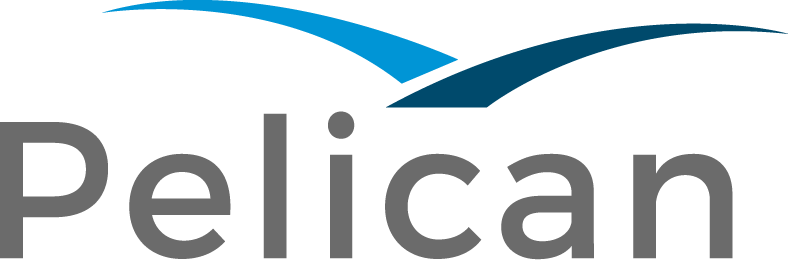With adoption well underway in over 70 countries, ISO 20022 is here to stay. Yet implementation of the standard is not an end unto itself. The resulting data flow should now be at the epicentre of banks’ strategies to monetise payments.

The ISO 20022 data challenge
Having a global format standard is one thing, but using the embedded data is another. Understanding and acting on the letter (content) inside the envelope (message) is key. Without this, you risk missing out on the opportunities and benefits the standard brings, and the investments in ISO 20022 aren’t fully maximised.
While adoption is on the rise, one fundamental issue remains. Banks' existing payments systems are simply not able to understand both structured and unstructured data to make sense of it in a meaningful way. We are just still moving the envelope around without opening and understanding the letter inside.
The letter contains the key message/instructions – yet if this is not fully understood and acted upon in a timely manner, the objective of sending the message is lost – whether in ISO 20022 or otherwise.
Payments are constrained by poor quality data
A recent study by SWIFT shows that 72-94% of party data fields in payments use free-format options with unstructured data to identify parties. This means there is potentially vague or missing critical information needed to effectively screen and process payments. And ISO 20022 messages will not eliminate this problem.
The data in the new ISO 20022 messages will still originate from the same customers, their ERP and accounting systems. They will still continue to send free format data. And it’s still being produced in a variety of different ways and formats, by multiple back-office applications. All making it incredibly difficult to compare, correlate, and combine reference and transaction data sets.
That’s why clean data that is easily understood by computer systems and humans is critical. Use of both the structured and unstructured data and normalising them for better use is key – the data is only as good as what you can do with it.
Gain control of your ISO 20022 data
Banks will get a lot of data passing through their systems with ISO 20022. However, this data needs to be properly cleaned, enriched, and normalised (i.e. encoded), so that it can be understood, catalogued (annotated), and made searchable, and readable – whether by machine or person. Before you can make the data useable, there are two key steps required:
Step 1: Data cleaning and normalisation
As computers can only understand numbers and codes, the first step then is to clean and normalise the data. ISO 20022 has many structured fields for first name, last name, city, country, and postal/zip code. However, there are also free-format fields that will persist. In order to leverage this data, you will have to understand and normalise all this data. For example, payments with a detailed description of bank and address without a bank code creates a problem for the payment system to process transactions and it ends up in manual repair.
This is where AI, especially Natural Language Processing (NLP) comes in. NLP based applications can read, understand and interpret descriptive information like humans and provide various bank codes based on additional information that is present in the payment instruction such as currency or country.
Another example is within invoice data extraction and matching, where AI and NLP techniques can uniquely match customer payments against invoices. As long as the invoice information is provided by the customer either in the free text field in MT or MX message, it can be matched against various payments and invoice parameters, such as data, currency, amount, recipient and even address.
Step 2: Data Enrichment
The next step in the use of data with ISO 20022 is to enrich the data. Here you take the data you have collected into the structured fields and enrich them with additional information. For example, adding the ISO country code, account or customer number related to the transaction or risk score, or even transaction type, product ID, customer segment, or payment method.
These enrichments could be simple or quite complex. The categorisation and purpose of the transaction based on parties involved, their industry and products they sell can be quite challenging, but very much possible. You may need to look at several internal or external sources of clean data to make that enrichment. However, once done, it would add tremendous value to the transaction. Such enrichments can be of significant value to the business for future sales and customer retention, and also to the customer.
Understanding the purpose of a payment transaction and automatic categorisation as salary, business invoice, mortgage payment or utility bills could be of significant benefit. This kind of information can be used by banks for the benefit of the customer, after appropriate consent, to help and guide the customer.
After the data has been cleaned, normalised, and enriched the next step is to find innovative ways to use this data.
How to leverage and monetise the data from ISO 20022
Mining and extracting value from this data will be a decisive differentiating factor for banks and other players looking to compete and take their customer propositions to the next level.
In a recent case example, Pelican helped a leading bank to optimise payment operations with a 60%-70% reduction in operational costs, improved customer satisfaction by double-digits, and increased volume by 50% – without any additional human effort.
With this in mind, here are six key outcomes we’ve observed from our engagements with clients leveraging the data from ISO 20022:
1. Reduce human intervention
Payments with a detailed description of bank and address without the bank code creates a problem for payments systems to process transactions. Usually ending up in manual repair. AI-based applications can read, understand, and interpret descriptive information like a human (but at incredible speed and scale) and provide various bank codes based on additional information that is present in the payment instruction - such as currency or country.
2. Detect and prevent fraud and AML
Monitor for unusual behaviours – the ability to monitor payments means you can proactively spot potential risk and enrich Anti Money Laundering (AMP) processes. The ability to find, understand and apply meaning in context to embedded blacklisted entities allows better false positives with significantly reduced FPR.
3. Offer highly personalised products
There is vast untapped data that can be extracted and monetised; Payments data can show valuable insight on people such as what they bought and where, and even how a specific person shops at a specific time – extremely valuable for personalisation.
With enriched data, you can identify life stages of a person or a business based on the financial transactions executed. Based on the same data, it is possible to predict financial and other needs of a person or a business and you can then offer appropriate guidance or advise e.g. on business loans, savings and investments, mortgages or insurance.
4. Activate predictive insights
Enriched data with insights and predictions can also help people manage wealth and affordability as well as manage cash flow and predict debt requirements.
5. Enhance data offerings for corporates
In addition to enhancing the consumer experience, there is also a huge opportunity to leverage ISO 20022 and analytics to provide critical capabilities to the corporate community. For example, you could identify types of payments and categorise them to match against invoices and purchase orders, then analyse this information to understand corporate overdraft usage or extra unused cash and offer personalised products to manage their cash better.
6. Identify data quality blind spots
Identify problem areas and take the right action where needed to ensure payments meet the relevant data quality standards.
Making sense of ISO 20022 data
Rapid adoption of cloud and API technologies, open-source software, and regulatory initiatives like Open Banking has created a level playing field between the banks and fintechs. Making data one of the last lines of defence banks have to protect their market share.
If banks are to truly compete with Big Tech companies such as Facebook, Amazon, PayPal, Square, and Apple, they need an approach that can enable them to extract value from data at speed and scale.
Five final reminders to get the most out of your ISO 20022 data:
-
ISO 20022 data needs to be cleaned so that it can be easily understood whether by human or machine.
-
Normalising ISO 20022 data will ensure data is prepared so that is can be made usable.
-
Leverage AI to enrich ISO 20022 data with banks’ existing quality data to open up new monetisation opportunities.
-
Implement innovative new products and services off the back of your clean, normalised and enriched ISO 20022 data.
-
Do all of this, while reducing manual human intervention saving you significant time and efficiencies.
In order to catch up with the various changes in technology, regulations and customer demands, banks’ increasingly need a partner that has the ability to understand both structured and unstructured data, combine multiple pieces of information available in various payments fields and understand then enrich, categorise, repair and recommend payments; all without manual human intervention.
Data is a key building block for all innovation and is becoming a growing point of differentiation for banks. It is now up to banks to use this information and turn it into value for their customers in a quick and easy way.
Harnessing the data from ISO 20022 can be complicated. Contact us to see how we can help.



